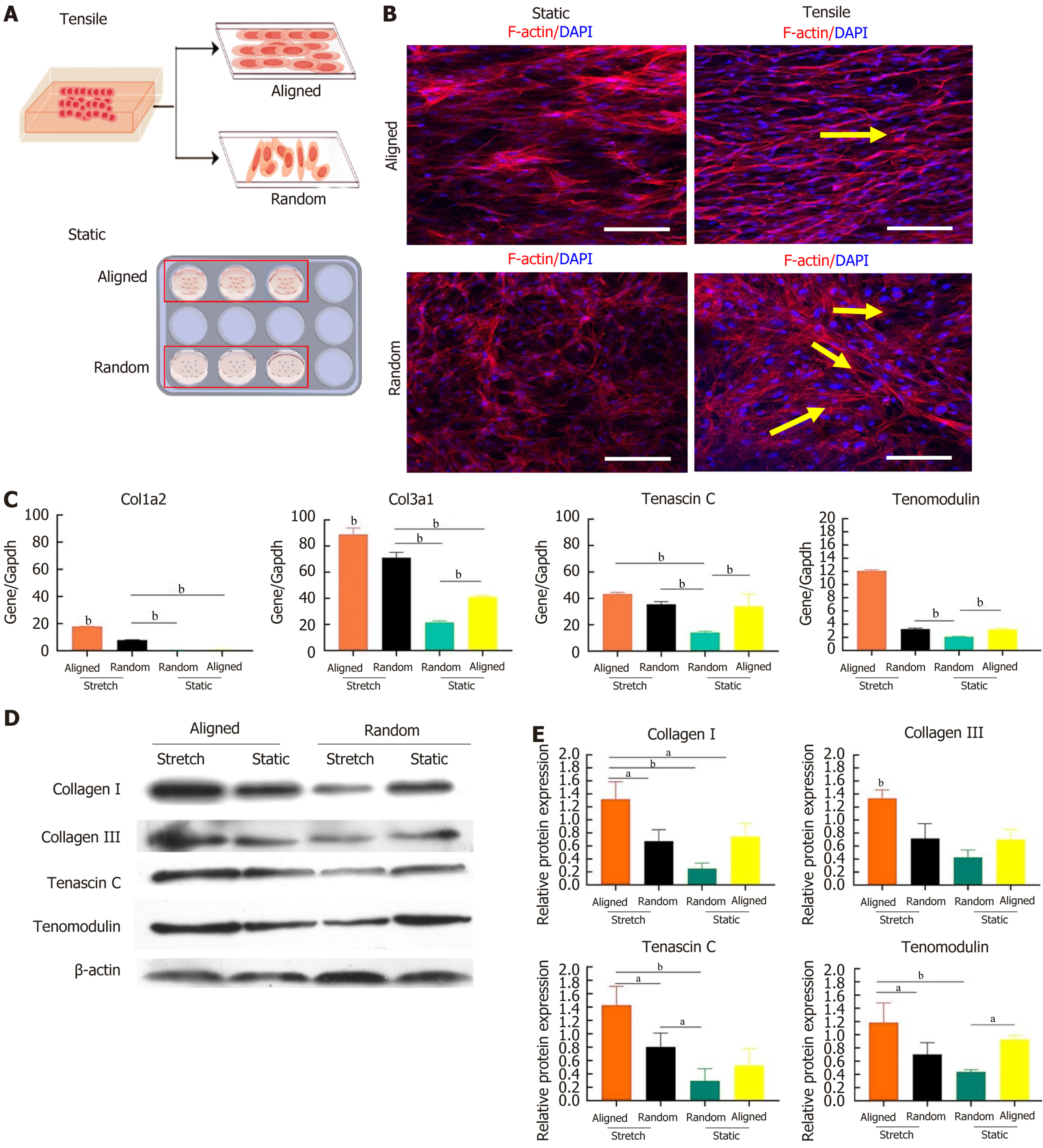Copyright
©The Author(s) 2025.
World J Stem Cells. Aug 26, 2025; 17(8): 107124
Published online Aug 26, 2025. doi: 10.4252/wjsc.v17.i8.107124
Published online Aug 26, 2025. doi: 10.4252/wjsc.v17.i8.107124
Figure 4 Effects of static and tensile conditions on bone marrow-derived mesenchymal stem cell alignment and tenogenic differentiation on aligned and random nanofiber scaffolds.
A: Schematic showing the experimental setup for culturing bone marrow-derived mesenchymal stem cells (BMSCs) on aligned and random nanofiber scaffolds under static and tensile strain conditions; B: Immunofluorescent staining of F-actin (red) and nuclei (4’,6-diamidino-2-phenylindole, blue) illustrating cytoskeletal alignment of BMSCs in response to static and tensile conditions. Under tensile strain, BMSCs on both scaffold types align along the direction of strain (yellow arrows). Scale bars: 50 μm; C: Gene expression levels of tenogenic markers collagen type I alpha 2, collagen type III alpha 1, tenascin C, and tenomodulin in BMSCs on aligned and random scaffolds under static and tensile conditions, showing upregulation of these markers with tensile strain; D: Western blot analysis of tenogenic proteins (collagen I, collagen III, tenascin C, and tenomodulin) in BMSCs cultured on aligned and random scaffolds under static and tensile conditions, with β-actin as the loading control; E: Quantified protein expression levels from western blot, demonstrating scaffold orientation and mechanical strain effects on tenogenic protein expression. aP < 0.05, bP < 0.01. DAPI: 4’,6-diamidino-2-phenylindole; Col1a2: Collagen type I alpha 2; Col3a1: Collagen type III alpha 1.
- Citation: Yang CW, Zhang YQ, Chang H, Gao R, Chen D, Yao H. Aligned nanofiber scaffolds combined with cyclic stretch facilitate mesenchymal stem cell differentiation for ligament engineering. World J Stem Cells 2025; 17(8): 107124
- URL: https://www.wjgnet.com/1948-0210/full/v17/i8/107124.htm
- DOI: https://dx.doi.org/10.4252/wjsc.v17.i8.107124









